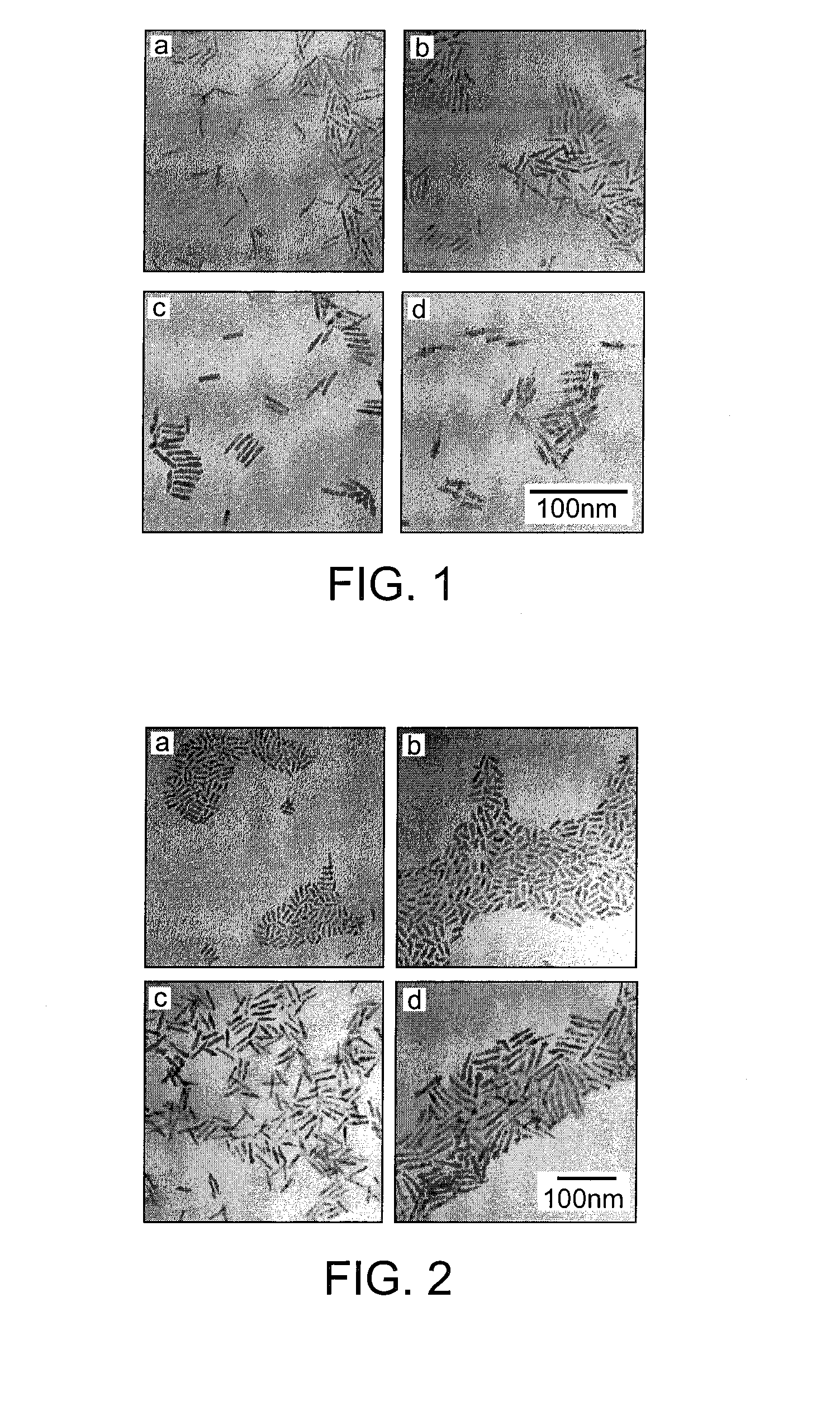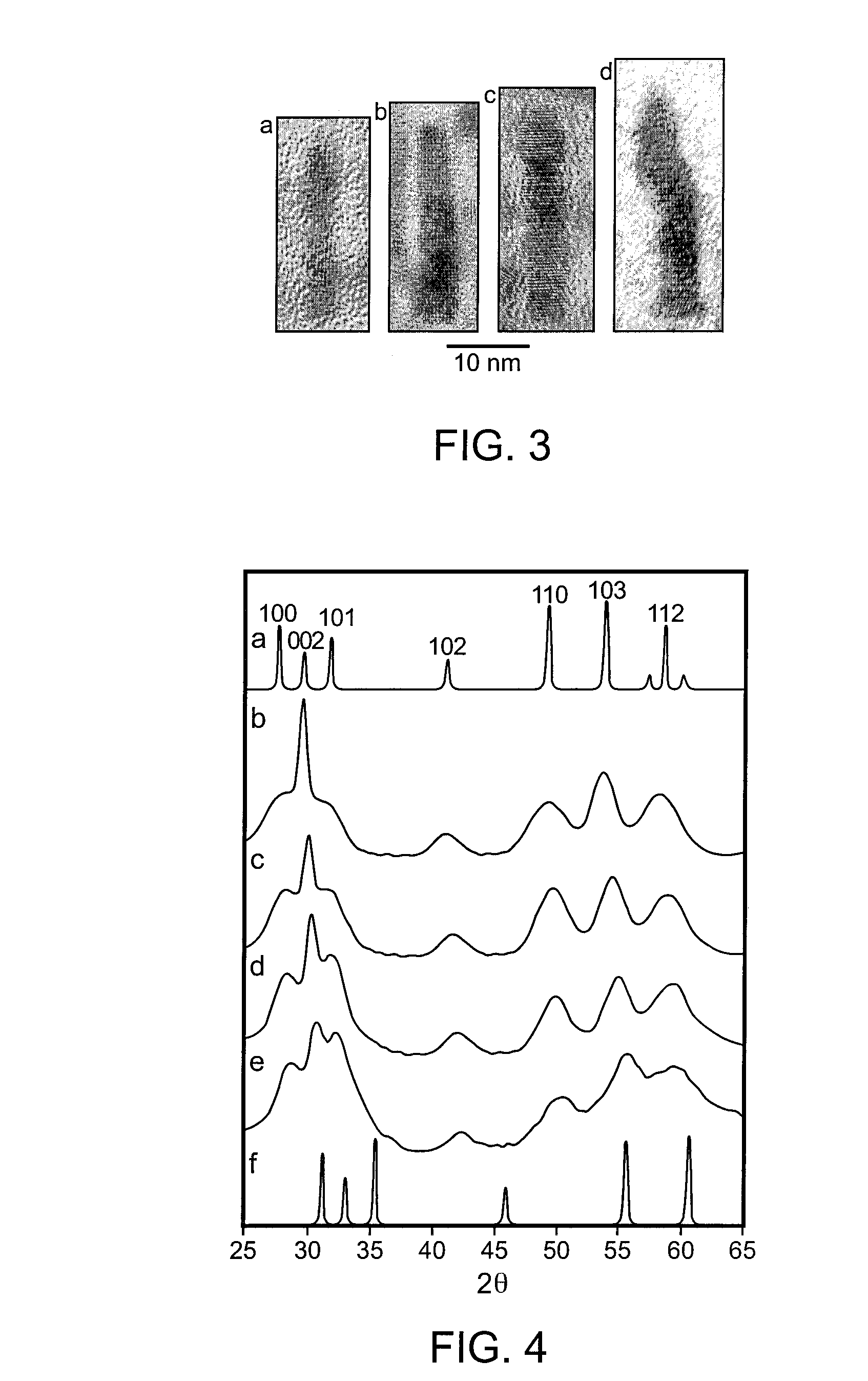GRADED CORE/SHELL SEMICONDUCTOR NANORODS and NANOROD BARCODES
a core/shell semiconductor and nanorod technology, applied in the field of graded core/shell semiconductor nanorods and nanorod barcodes, can solve the problems of band-edge emission of nanocrystals, exposing some regions of the surface, and passivation by organic molecules is often incomplete or reversible, so as to increase the quantum efficiencies and increase the photoluminescence qy
- Summary
- Abstract
- Description
- Claims
- Application Information
AI Technical Summary
Benefits of technology
Problems solved by technology
Method used
Image
Examples
examples
[0067]The examples provided herein are provided as examples and not limitations, wherein a number of modifications of the exemplified process are contemplated and within the scope of the present invention.
[0068]I. Materials
[0069]Dimethylcadmium (Cd(CH3)2, 97%) and tri-n-butylphosphine (C12H27P or TBP, 99%) were purchased from Strem. Cd(CH3)2 was vacuum transferred and stored at −35° C. under argon. Selenium (Se) (99.999%), tri-n-octylphosphine oxide (C24H51OP or TOPO, 99%), diethylzinc (C4H10Zn, or Et2Zn, 1.0 M solution in heptane) and hexamethyldisilathiane (C6H18Si2S or (TMS)2S) were purchased from Aldrich. Hexylphosphonic acid (C6H15O3P or HPA 99%) was purchased from Organometallics Inc., and tetradecylphosphonic acid (C14H31O3P or TDPA, 98%) was purchased from Alfa. All solvents used were anhydrous, purchased from Aldrich and used without any further purification.
[0070]II. Stock Solutions
[0071]Stock solutions were prepared in a dry box under Ar and then placed in a refrigerator ...
PUM
| Property | Measurement | Unit |
|---|---|---|
| temperature | aaaaa | aaaaa |
| temperature | aaaaa | aaaaa |
| lengths | aaaaa | aaaaa |
Abstract
Description
Claims
Application Information
 Login to View More
Login to View More - R&D
- Intellectual Property
- Life Sciences
- Materials
- Tech Scout
- Unparalleled Data Quality
- Higher Quality Content
- 60% Fewer Hallucinations
Browse by: Latest US Patents, China's latest patents, Technical Efficacy Thesaurus, Application Domain, Technology Topic, Popular Technical Reports.
© 2025 PatSnap. All rights reserved.Legal|Privacy policy|Modern Slavery Act Transparency Statement|Sitemap|About US| Contact US: help@patsnap.com



